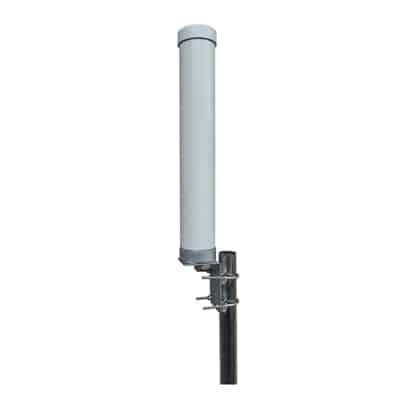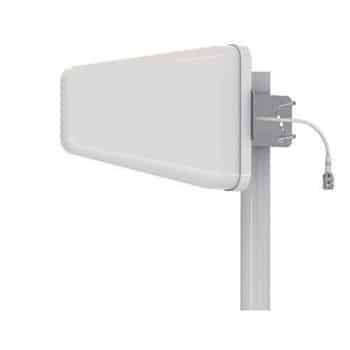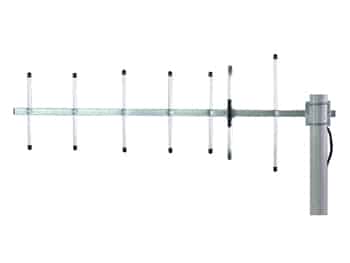NB-IoT (Narrow Band Internet of Things) has transformed the industrial IoT landscape. Its impressive features such as low cost, low power, good coverage, security, and reliability have made it an ideal technology for industrial applications. The impact of NB-IoT is seen in almost all industries. This article provides an introduction to the concepts of NB-IoT and industrial IoT and then describes how the features of NB-IoT have enabled and enhanced IoT applications in the industrial landscape. A few use cases of different industries where NB-IoT has hugely impacted such as manufacturing, smart cities, agriculture, and medical industries are then discussed in the next section. A few of the challenges associated with NB-IoT and the future of NB-IoT in the industrial landscape are also included here.
Table of Contents
ToggleWhat is NB-IoT?
NB-IoT is a modern low-power technology that supports bidirectional communication up to 200 kbps data rates. It is widely used for IoT applications, low data rate communications, and long battery life applications. Narrow Band IoT is able to achieve high levels of efficiency by using narrowband radio frequency spectrum along with advanced modulation and multiple access techniques such as Time Division Multiple Access (TDMA) and Frequency Division Multiple Access (FDMA) as well as advanced power management techniques. This enables the efficient use of the available spectrum and extends the battery life of IoT devices. Compared to other IoT technologies, NB-IoT offers better security, coverage, and reliability.
What is Industrial IoT?
Industrial IoT is one of the fastest growing sectors and is the highest IoT spending in the global market. The main target of Industrial IoT is to connect machines and devices and provide smart solutions in order to improve efficiency by automating and optimizing the work processes in industries. It differentiates from consumer IoT as failures in Industrial IoT can cause catastrophic consequences and will involve high risk and threatening situations. Industrial IoT is now being used in almost every industry ranging from engineering, manufacturing, automotive, robotics to agriculture, healthcare and banking industries.
Key Features of NB-IoT that Enable Industrial IoT Transformation
Narrowband IoT has revolutionized the landscape of industrial IoT due to its impressive features and thus provides better facilities compared to GSM/GPRS or any other IoT related technology. NB-IoT provides deeper coverage and can penetrate obstacles easily. This makes it possible to implement IoT devices even in remote areas or underground.
Another key feature of NB-IoT is the long battery life. Since NB-IoT operates at low data rates, it consumes low power and therefore can work for a longer duration without requiring a battery replacement. This is beneficial for industrial IoT applications as it reduces the overall maintenance cost for the device. A major factor that has popularized the use of NB-IoT in the industrial landscape is its ability to have secure communication. This makes it ideal for industrial IoT applications because data privacy and security are critical. Since a narrow radio frequency spectrum is used, interference from other devices will be reduced. This ensures reliable communication between the IoT devices which is important in the industrial landscape to minimize the associated risks in industries. This also makes it a suitable communication mode to use in noisy environments. Another reason for NB-IoT to be used in industrial applications is its ability to support a massive number of devices. Its scalability has enabled NB-IoT to be used in applications such as motor traffic control in cities where a huge amount of devices are connected. NB-IoT uses existing cellular infrastructure. Therefore, it is easy to deploy and can be easily set up for industrial IoT applications. This reduces the cost and time which is another feature of NB-IoT that has contributed to the massive transformation in the Industrial IoT sector.
The industrial IoT landscape has had a massive boost due to the application of NB-IoT. It has improved the overall productivity and efficiency in IoT applications. Since NB-IoT has enabled predictive maintenance applications and asset monitoring it has made a significant reduction in asset downtime. Enhanced operational capabilities, reduction in operational costs and improved quality are some of the benefits brought on by the use of NB-IoT in Industrial IoT.
What can Tesswave do for you?
Tesswave provide 100+ antenna products and you can contact us for antenna customized solutions, get in touch with us today to get a Free quote.
Get an Instant Quote
Get a FREE quote and we will contact you within an hour
Use Cases of NB-IoT
Narrowband IoT has impacted almost all industries. A few of the industries that has improved in leaps and bounds with the usage of NB-IoT have been discussed below.
1. MANUFACTURING INDUSTRY
The manufacturing industry is one of the main industries that has been massively transformed by the use of NB IoT in their IoT applications. In manufacturing, predictive maintenance is a key area where NB-IoT is being applied. Predicting when equipment is likely to fail can reduce downtime and will also allow manufacturers to set up maintenance schedules accordingly. NB-IoT can also be used for asset tracking. This will create end-to-end operational and supply chain visibility which in turn will help manufacturers to track and optimize their supply chains. NB-IoT enables smart manufacturing, thus helping to reduce waste, improve quality by identifying defects early in production and improve overall efficiency.
2. AGRICULTURE INDUSTRY
Agriculture industry is another industry that has been heavily influenced by NB-IoT. Monitoring systems such as soil moisture monitoring and crop health monitoring that run on IoT concepts have been revolutionized due to NB-IoT. It has enabled farmers to optimize irrigation schedules and to identify pests and diseases early in crops so that necessary actions can be taken. Livestock management, animal tracking systems, and animal health monitoring systems are a few more examples where IoT in the agriculture industry has been improved by the use of NB-IoT.
3. SMART CITIES AND CITY PLANNING
Smart city concept had been majorly improved by NB-IoT. It has been used in a variety of smart city applications. Smart parking by locating open parking spaces helps to reduce traffic congestion in cities. Smart lighting systems for street lamps are also powered by NB-IoT. It can help to reduce energy consumption by allowing automatic adjustment of the brightness of street lamps depending on the ambient light levels. Smart waste management systems that use NB-IoT can help to optimize the waste collection process and reduce operational costs.
4. MEDICAL INDUSTRY
Medical industry is another industry that has been revolutionized with NB-IoT. Remote patient monitoring is a major area where NB-IoT is used. This has enabled healthcare providers and patients to be in touch and communicate while being at remote locations. NB-IoT is also used for medical asset tracking. Inventory management systems for medical supplies and equipment tracking systems enabled by NB-IoT have been vital for healthcare providers to always be prepared for emergencies. Smart hospital concepts that include patient tracking and staff tracking have been possible as a result of the NB-IoT application.
Challenges Associated with NB-IoT
Despite the many benefits and improvements brought upon by NB-IoT in industries, there are few challenges too. One of the main challenges associated with NB-IoT is the limited bandwidth. This can create some issues when using it in high dense urban areas. Although this has secure communication, due to the massive number of devices inter-connected there can be few security concerns as well. Another challenge is the latency in NB-IoT is higher compared to other LPWAN technologies like LoRaWAN. The goal is to figure out methods to minimize the adverse features of NB-IoT and to improve the technology so that it can be integrated even more into industrial IoT applications.
Future of NB-IoT in IIoT
In future, the usage of NB-IoT in industries will be even further enhanced. NB-IoT will continue to impact all industries and is a future proof investment, especially with the advancement of technologies like 5G and 6G. Chipset vendors, hardware manufacturers and equipment providers are looking to integrate NB IoT usage into their products and thus will have major advancements in near future. Using Self Organizing Network (SON) technologies and edge computing to improve the scalability of NB-IoT applications are some of the future research areas in NB-IoT considering the industrial landscape.
Conclusion
In conclusion, NB-IoT has revolutionized the industrial IoT landscape by providing a low-cost, low-power, and reliable communication network for IoT applications. Deep coverage, long battery life, and secure communication are some of the main features and advantages of NB-IoT that have enhanced industries. NB-IoT has impacted almost all industries including manufacturing, agriculture, and medical industries. Although there are a few challenges such as limited bandwidth and latency associated with NB-IoT, with research and improvements, NB-IoT will definitely be even more impactful in the industrial landscape in the future.







